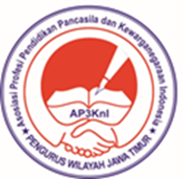Application Of Mind Mapping-Assisted Poster Commen Method To Improve Students’ Creative Thinking Skills In Primary School
DOI:
https://doi.org/10.24269/dpp.v13i2.10382Abstract
This research was motivated by the low creative thinking ability of grade IV students of State Elementary School 007, Bangkinang City.. One solution to this problem is using the Mind Mapping-Assisted Poster Commen Method. This study aims to improve the creative thinking skills of grade IV students of State Elementary School 007, Bangkinang City, a total of 23 students, with 12 male and 11 female students. This research method is a class action research carried out in two cycles. Each cycle consists of two meetings and four stages of learning: planning, implementation, observation, and reflection. The research will be conducted in September 2023, using data collection techniques in the form of documentation and observation. At the same time, data analysis techniques include qualitative and quantitative analysis. These research instruments are teacher activity observation sheets, student activity observation sheets, and student worksheets. Based on the results of data analysis, the results of creative thinking skills of grade IV students of State Elementary School 007, Bangkinang City. They were obtained in pre-action with a percentage of learning completeness of 30.43%. In the first cycle of meetings, I had a percentage of learning completeness of 43.47%. Students who completed only 10 students and cycle I meeting II, the percentage of learning completeness increased to 60.86%, with only 14 students completing. In the second cycle of meetings, I also increased the percentage of learning completeness to 78.26%, with 18 students completing cycle II meeting II, and the percentage of learning completeness increased again to 91.30%, with 21 students completing cycle II meeting II. Thus, it can be concluded that applying the Mind Mapping-Assisted Poster Commen Method can improve the creative thinking ability of grade IV students of State Elementary School 007, Bangkinang City.
References
Ananda, R. (2019). Penerapan Metode Mind Mapping untuk Meningkatkan Kemampuan Berpikir Kreatif Siswa Sekolah Dasar. Edukatif : Jurnal Ilmu Pendidikan, 1(1), 1–8.
Anggranei, F., N. (2020). Realitas Kompetensi Guru Pasca Sertifikasi. SCIENTIFIC JOURNAL OF REFLECTION : Economic, Accounting, Management and Business, 3(4), 331–340. https://doi.org/10.37481/sjr.v3i4.229
Dewanto, Y. (2020). Perancangan Poster Kampanye Memasyarakatkan Bahan Bakar Gas sebagai Bahan Bakar Ramah Lingkungan. Magenta, 4(2), 678–699.
Dewi, A. C. (2018). Pengaruh Model Pembelajaran Inquiry Berbantuan Media Animasi Terhadap Kompetensi Pengetahuan Ipa. Journal for Lesson and Learning Studies, 1(3), 165–173. https://doi.org/10.23887/jlls.v1i3.15371
Eva, L., M., & Kusrini, M. (2015). Hubungan Kecerdasan Emosional dan Berpikir Kreatif terhadap Prestasi Belajar matematika. Jurnal Formatif, 5(20), 245–256.
Hastuti, T., E. (2018). Peningkatan Kemampuan Berpikir Kritis dan Komunikasi Matematis Siswa Menggunakan Model Pembelajaran TTW dengan Open Ended Aapproach.
Hermida. (2017). Penggunaan Metode Poster Coment untuk Meningkatkan Hasil Belajar IPA Materi Perubahan Lingkungan Siswa Kelas IV SD Negeri 012 Koto Kari. Gerakan Aktivitas Menulis, 5(1), 62–68.
Huliatunisa, Y., Wibisana, E., & Hariyani, L. (2019). Analisis Kemampuan Berpikir Kreatif Matematis Siswa dalam Menyelesaikan Soal Pemecahan Masalah. Indonesian Journal of Elementary Education, 1(1), 56–65.
Khalida, A. (2021). Penerapan Metode Eksperimen untuk Meningkatkan Hasil Belajar IPA SiswaKelas VI SD. Jurnal Ilmiah Pendidikan, 4(2), 182–189.
Nasution, R., A. (2019). Penerapan Metode Poster Comment dalam Meningkatkan Keterampilan Berbicara pada Mata Pelajaran Bahasa Indonesia Siswa Kelas V Sekolah Dasar Negeri 42 Kota Bengkulu.
Noerjannah, A., Suryana, Y., & Sumardi, H. (2016). Penerapan Metode Poster Comment untuk Meningkatkan Berpikir Kreatif Siswa pada Pembelajaran IPS di Kelas IV. Pendidikan, 1(1), 262–271.
Novita, L., & Sundari, F., S. (2020). Peningkatan Hasil Belajar Siswa Menggunakan Media Game Ular Tangga Digital. Jurnal Basicedu, 4(3), 716–724. https://doi.org/10.31004/basicedu.v4i3.428
Panjaitan, W., A., Simarmata, E., J., Sipayung, R., & Silaban, P., J. (2021). Upaya Meningkatkan Hasil Belajar Siswa Menggunakan Model Pembelajaran Discovery Learning pada Siswa Sekolah Dasar. Jurnal Basicedu, 5(4), 2181–2188.
Rojak, H., A. (2016). Upaya Meningkatkan hasil Belajar Siswa Melalui Model Mind Mapping. Pendidikan, 1(1), 1–5.
Roza, S. (2022). Penerapan Metode Poster Comment untuk Meningkatkan Kemampuan Pemahaman Siswa pada Pembelajaran IPS di Kelas IV Sekolah Dasar Muhammadiyah 028 Penyasawan Kabupaten Kampar.
Rozaq, M., I., & Kocimaheni, A., A. (2020). Kesesuaian RPP dengan Pelaksanaan Pembelajaran Bahasa Jepang di Kelas X SMA. Jurnal Pendidikan UNS, 1(1), 1–9.
Saefudin, A., A. (2011). Proses Berpikir Kreatif Siswa Sekolah Dasar ( SD ) Berkemampuan Matematika Tinggi dalam Pemecahan Masalah Matematika Terbuka. Pendidikan, 1–9.
Saitya, I. (2022). Pentingnya Perencanaan Pembelajaran pada Pelajaran Pendidikan Jasmani Olahraga dan Kesehatan. PIOR: Jurnal Pendidikan Olahraga, 01(01), 9–13.
Siswono, T., Y., E. (2007). Konstruksi Teoritik tentang Tingkat Berpikir Kreatif Siswa dalam Matematika. Pendidikan, 1(1), 1–10.
Yasiro, L., R., Wulandari, F., E., & Fahmi. (2021). Analisis Kemampuan Berpikir Kreatif Siswa dalam Menyelesaikan Soal pada Materi Pemanasan Global Berdasarkan Prestasi Siswa. Jorrnal of Banua Science Education, 1(2), 69–72.
Downloads
Published
Issue
Section
License
Copyright (c) 2025 Mellya Silsiani Dewi

This work is licensed under a Creative Commons Attribution 4.0 International License.
Copyright
Authors who publish their manuscripts in this journal agree to the following terms:
- The copyright on each article belongs to the author.
- The author acknowledges that Jurnal Dimensi Pendidikan dan Pembelajaran has the right to be the first to publish under a Creative Commons Attribution 4.0 International (Attribution 4.0 International CC BY 4.0) license.
- Authors may submit articles separately, arranging for the non-exclusive distribution of manuscripts that have been published in this journal to other versions (e.g., sent to the author's institutional repository, publication into books, etc.), acknowledging that the manuscript was first published in the Jurnal Dimensi Pendidikan dan Pembelajaran.
Â
License
Use of the article will be governed by the Creative Commons Attribution license as currently published under the Creative Commons Attribution 4.0 International License (Attribution 4.0 International (CC BY 4.0).
Â
This license permits anyone to copy and redistribute this material in any form or format, compose, modify, and make derivatives of this material for any purpose, including commercial purposes, as long as they give credit to the author for the original work.


_001.jpg)



